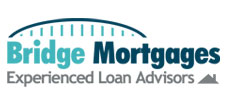| |
Most people who have owned a home know how a mortgage works. The monthly loan payment is derived by calculating the loan amount, interest rate and the number of years to pay back the loan. So, each monthly payment consists mainly of interest due each month and the amortization of the principal. Amortization means the gradual reduction of principal.
|
Now, with home prices being so high, lenders have come up with loans to make payments more affordable. One type is an interest only loan where you typically pay interest for the first five years. Then, there is a payment increase that brings the loan to the fully-amortizing level.
The other type is a deferred interest loan, also known as a payment option ARM (adjustable rate mortgage) because the borrower typically has four payment options: a minimum payment that only covers part of the interest, an interest only payment option, a fully-amortizing payment option and a payment option that lets the borrower pay the loan off early. |
Typically, borrowers choose the minimum payment option, which are not enough to cover both the interest and principal payments on the loan, so the shortage is added to the loan balance, which is why these loans are also known as negative amortization loans. According to Jack Guttentag, professor emeritus of finance at the Wharton School, negative amortization occurs when:
- The initial payment does not cover the interest due, as in the example. The purpose of such a feature is to increase affordability.
- The interest rate adjusts more frequently than the monthly payment. The purpose of this feature is to avoid frequent changes in your monthly payment.
- Changes in the monthly payment are capped, usually at 7.5%. The purpose is to avoid large changes in the payment.
In comparing negative amortization payments versus interest only payments, interest only payments may cost a little more each month, but the payment increase to make it a fully-amortization loan isn't nearly as bad because you don't have to make up any principal shortfall as you would with payment option ARMs. So, if you're looking to increase your purchase power on a high-priced home, consider an interest only loan rather than a payment option ARM.
If your first mortgage is a negative amortization loan, try to refinance before your payments increase. If you have a negative amortization second mortgage, you should refinance the second mortgage. The interest rates are low and have pretty much leveled off probably to the end of the year, so fixed rate loans would be your best bet. Take advantage of the lowered interest rates and refinance now.
|

